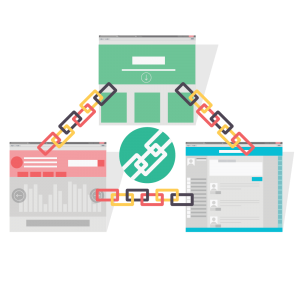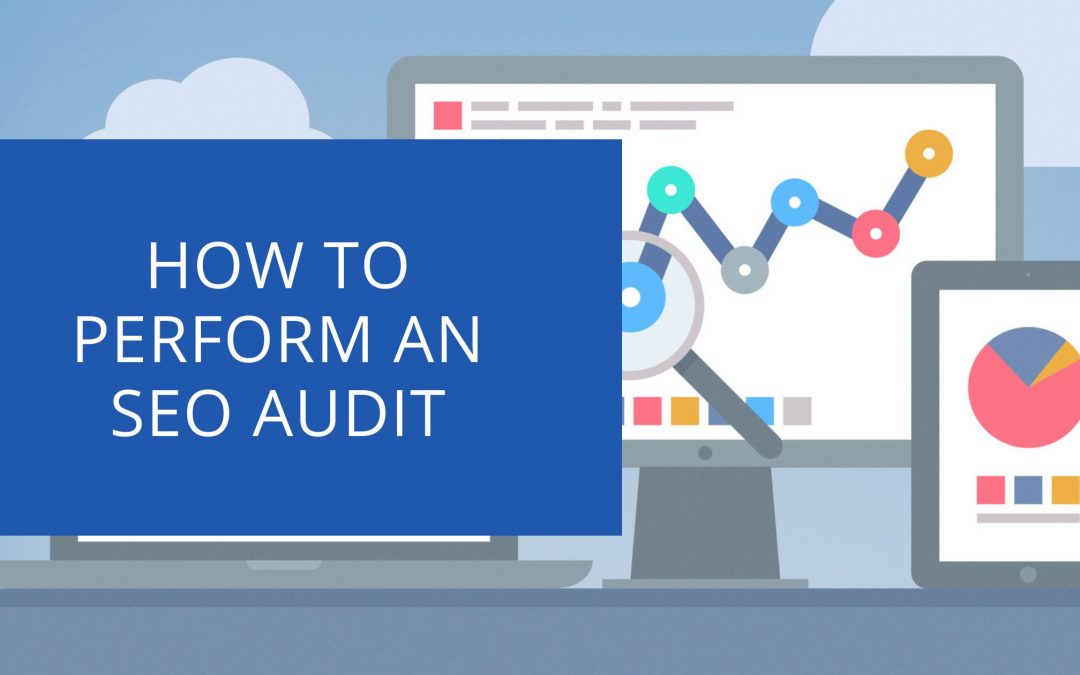An SEO audit is an in-depth analysis of your website that helps you improve search engine rankings, drive more traffic to your site, and increase conversions. It includes a review of the content on your website, links within the site, metadata tags on each page, page speed optimisation tools for web hosting providers.
This article provides 22 tips for performing an SEO audit so that you can start ranking higher today!
Contents
What Is A Website Audit?
A website audit is an analysis of your current site that allows you to identify areas for improvement. The best time to do this type of analysis is when you first launch a new website (if SEO wasn’t considered before launch), but it can also be done on existing sites if they are having issues with search engine rankings or traffic levels.
What is included in an SEO Audit?
The main four areas in an SEO audit are technical, content, link profile, and competitor analysis. Let’s have a quick overview of the topics in these four areas.
Technical Analysis
- Site structure and navigation
- Crawl errors
- 301 Redirect Review
- Page Speeds
- Internal Links
- Check for canonicals
- robots.txt file analysis
- Logfile analysis
- Schema
- Site maps
- Page Speed
- Mobile-friendliness
- Broken links and 404 pages
Content Analysis
- On-page Optimisation
- Keywords targetted
- Topical Authority
- Image Optimisation
- Content Quality
- Formatting
- Keyword cannibalisation issues
- Social media integration
Link Profile Analysis
- Link evaluation
- Anchor text analysis
Competitor Analysis
- Content evaluation
- Link profile analysis
- Gap analysis
Now we know what is included in an SEO audit, here are our tips for each stage of the process.
SEO Audit Tips
 Check your site structure and navigation to ensure that it is set up correctly. This will help users find the information they are looking for on your website more easily, which means a higher chance of them purchasing from you or signing up to be part of your mailing list.
Check your site structure and navigation to ensure that it is set up correctly. This will help users find the information they are looking for on your website more easily, which means a higher chance of them purchasing from you or signing up to be part of your mailing list.
Tip 2: Crawl errors
Make sure there are no broken links within any pages or incorrect redirects if page URLs have changed over time – this can lead to ranking drops due to decreased usability (both internal and external).
If either applies, check out Google Search Console (formerly Webmaster Tools) > “Crawl” section for error listings under Fetch as Googlebot. You should also use Screaming Frog SEO Spider to crawl your website for errors (and other data) – it’s a free download.
Tip 3: 301 Redirect Review
301 redirects are an important part of any site migration or re-branding project, but they can also hurt your site if not set up correctly.
Check for 301 redirects that are no longer needed and fix them so that you don’t lose any link juice (or worse, traffic).
You can use Screaming Frog SEO Spider again here – it will show you all the 301 redirects on your website.
Be aware of redirect chains as these can happen when you have multiple redirects on one URL, i.e., A -> B -> C (where both A and C are pointing at each other).
They’re also known as loop errors because of how they can keep going round in circles until you ultimately end up with 404 Not Found pages due to there not being an actual path back from where you started!
Tip 4: Page Speeds
Page speeds play a huge role in user experience and SEO. Make sure you’re using Google PageSpeed Insights and YSlow to analyse your page speeds and take action on the recommendations they give you.
Pages with a high bounce rate are likely because of slow page speeds, so improving this metric will help keep users around longer as well as improve your search engine rankings.
Tip 5: Internal Links
Internal links (links from one page on your website to another) are important for two reasons: They help spread link juice throughout your site, and they help users navigate your website more easily. Both of these factors contribute to better user experience and, in turn, better SEO.
Check your articles and if you can link to other articles to help spread the juice. Or, create supporting content for your existing content and link to it to give it a boost.
Tip 6: Check for canonicals
 Make sure your site is set up with rel=canonical tags where necessary and where they are being used, ensure they are correct, e.g., pages you want to show as duplicates but also tell Google they are the same content (so that no duplicate content penalty applies).
Make sure your site is set up with rel=canonical tags where necessary and where they are being used, ensure they are correct, e.g., pages you want to show as duplicates but also tell Google they are the same content (so that no duplicate content penalty applies).
You can use Screaming Frog SEO Spider again here – just check “HTML” under “Configure Filters”, then click on the Canonical tab and enter your domain name into the field below it.
Tip 7: robots.txt file analysis
The robots.txt file lets you give instructions directly to search engine crawlers about which parts of a website or specific URL should not be followed or indexed by them in their database – this helps control indexation without needing meta tags.
Check your robots.txt file for any errors or messages that might be returned by search engines crawling it and make the necessary changes to fix them – this will help prevent a possible crawl penalty.
You can use the robots.txt Tester in Google Search Console.
Tip 8: Logfile analysis
Analysing your website’s logfiles is a great way to see how search engine crawlers are interacting with your website. This information can help you troubleshoot any crawl errors and improve your site’s indexation.
You can use Screaming Frog SEO Spider for this (under “Configuration” > “Log File Analysis”) or one of the other many free online logfile analysers.
Tip 9: Schema
Schema markup is a great way to provide search engines with additional information about different parts of your website. Schema can help the search engine understand the topic and context of certain pages as well as show them how content should be displayed in SERPs (e.g., title, headings).
Use Google’s Structured Data Testing Tool to see if you’ve implemented it correctly or check for any errors that might prevent proper indexation and display in SERPs.
Tip 10: Site maps
A sitemap is a great way to provide search engines with an overview of your website’s structure and help them crawl and index it more efficiently. You can use Screaming Frog SEO Spider for this (under “Configuration” > “Sitemaps”) or one of the many other free online sitemap generators.
Tip 11: Mobile-friendliness
With more and more people using mobile devices to access the internet, your website must be mobile-friendly. Use Google’s Mobile-Friendliness Test Tool to check whether your website passes the test and make any necessary changes.
Tip 12: Check for errors in Google Search Console
 Google Search Console is a free tool provided by Google that gives you detailed information about how your website is performing in search results. It provides data on everything from indexation and clickthrough rates to 404 errors and site speed.
Google Search Console is a free tool provided by Google that gives you detailed information about how your website is performing in search results. It provides data on everything from indexation and clickthrough rates to 404 errors and site speed.
You should be checking this regularly for any errors or issues that need to be addressed.
Tip 12: Broken links and 404 pages
Having broken links or 404 pages on your website can hurt user experience, which in turn hurts SEO. Check Screaming Frog SEO Spider (under “Configuration” > “URL Parameters”) for any errors and fix them if necessary.
Tip 13: On-page Optimisation
Make sure to use your keyword throughout the article in title, H tags, and alt image tag. Read our guide to on-page optimisation for full details of optimising content for the best results.
Tip 14: Keywords targetted
Check you are using the correct keywords (or synonyms) throughout the article. A good tool for this is SEMrush, which allows you to quickly find relevant keywords and compare their search volume with other phrases.
Tip 15: Topical Authority
Make sure the articles on your site are relevant and you have plenty of it to build your topical authority.
Tip 16: Image Optimisation
Add alt attributes to images with relevant keywords for SEO benefits – this will help you rank higher on the search engine results page as well as provide users with more information about what they are looking at!
Tip 17: Content Quality
Make sure you have high-quality content on your site that is relevant to the audience and matches up with what they are looking for.
Tip 18: Formatting
Format your articles for readability and to make them visually appealing. This will help keep users on your site for longer and encourage them to share your content with others and is a sign of on page quality to the Google algorithm.
Tip 19: Keyword cannibalisation issues
If you have multiple pages targetting the same keywords, make sure you are not cannibalising your traffic. If you have pages targetting the same keywords look into combining the content and 301 redirect the old page(s) to the new one(s).
Tip 20: Link evaluation
Check the number of links pointing to your site is within Google’s guidelines. Sites with excessive or unnatural backlinks are penalised by search engines – make sure you have a healthy link profile.
You can use tools such as ahrefs and SEMrush to evaluate your link profile and identify any potential issues.
Not all links are created equal – make sure you have high-quality links from reputable sources that will help improve your SEO ranking.
Tip 21: Anchor text analysis
The anchor text of a link in the text is used to hyperlink to another page. This can be a great way to measure the relevance of a page – make sure you have a good mix of branded and non-branded anchor text links.
You can use ahrefs or SEMrush to analyse your Anchor Text distribution.
Tip 22: Content evaluation
Look at your competitors’ articles and see what you can learn from them. Do they have articles that you don’t have on your site? Write about these topics too and build your topical authority for a ranking boost. And don’t forget to internally link to your other pages for the benefits it can bring.
You can use ahrefs or SEMrush to check your competitor sites to see which pages are getting the most and or attracting the most links. You can target the same terms and steal their traffic!
Tip 23: Link profile analysis
 Use SEO tools to look at your competitor’s link profile. What kind of metrics do they have? How many high-quality links do they have? Which links can you build for your site? This will give you an idea of how many links you will need to beat them.
Use SEO tools to look at your competitor’s link profile. What kind of metrics do they have? How many high-quality links do they have? Which links can you build for your site? This will give you an idea of how many links you will need to beat them.
SEO Audit FAQ
What is an SEO audit?
An SEO audit is a complete analysis of your site’s health. It requires you to check all aspects of the site – from content and structure to on-page optimisation factors.
How often should I conduct an SEO audit?
This largely depends on the size and complexity of your website. However, we recommend conducting an SEO audit at least every quarter to ensure that everything is running smoothly and you’re not missing any important optimisation factors.
Why do I need to complete an SEO audit?
An SEO audit is the only way to guarantee that you’re not missing anything on your website, catch up to and to stay ahead of your competitors.
How do you perform a site audit?
There isn’t a one-size-fits-all answer to this question as the audit will vary depending on your website. However, there are some key areas that you need to check – such as site structure, content, on page optimisation, and backlinks. You can use various SEO tools to help you with this process.
What are high-quality links?
High quality backlinks are incoming links that come with relevant anchor text pointing at the page they link too which will help improve search rankings for both pages.
How do I know if my website has been penalised by Google?
Sometimes there isn’t an official way of knowing this but there are some telltale signs. Your site traffic may suddenly drop, you may see a decrease in search engine rankings or you may experience an increase in spammy links.
You can also receive a manual action notification in Google Search Console if you receive a penalty.
If you suspect that your website has been penalised, it’s best to perform an SEO audit to find out what the issue is and how to fix it.
What are on-page optimisation factors?
On page optimisation factors are all those things that can be controlled by the site owner and influence how well their website ranks in SERPS. This includes elements such as title tags, meta descriptions, header tags etc.
We Offer SEO Services Nationwide
- Chester:https://mediakynect.co.uk/seo-chester/
- Wirral: https://mediakynect.co.uk/seo-wirral/
- Liverpool: https://mediakynect.co.uk/seo-liverpool/
- North Wales: https://mediakynect.co.uk/seo-north-wales/
- Wrexham: https://mediakynect.co.uk/seo-wrexham/
Conclusion
SEO is a complex and ever-changing field, but by following the tips in this article you can make sure your site is doing as well as it can. The 22 tips we have provided will help you evaluate your site’s current state and identify any areas that need improvement. Make sure to implement them all for the best results!

